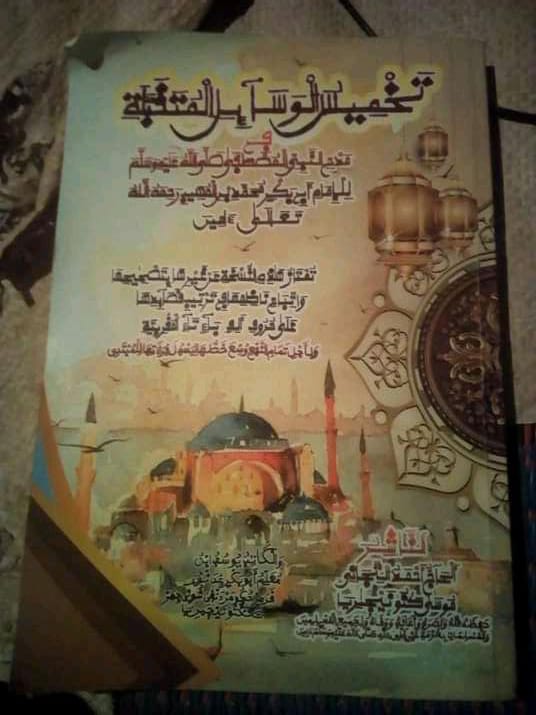
By Abdussamad Ahmad Yusuf
Takhmiysul wasa’il al-mutaqabbala best known as Ishiriniyya writen by Imam Abd al-Rahman ibn Yakhlaftan ibn Ahmad al-Fazazi, belongs to the madh genre — poems in reverence of Prophet Muhammad (SAW). Kano ‘walled’ city (cikin Gari) bred number of personalities identified with reading Ishiriniyya. Mai Ishiriniya is a title attached to the people notable with Ishiriniyya and it now become many families surname.
Mallam Bala mai Yafe had in Kano, become a name synonymous to Ishiriniyya. Of recent we had also, the late Sheikh Sani Mai Ishiriniyya.
My father Tijjani Umar (T. Umar) although categorised as Danboko — western educated — in the 1970s through the 1980s was one of the promising young guys in the Magoga Quaters with melodious style of reading the Ishiriniyya. I came to know about the book first from him before Alhaji Balarabe Mai Dala’ilu established weekly Ishiriniyya class which we receive Biscuit and sweets for attending every Friday.
Ishiriniyya in Cikin Gari is frequently recited different from the “informal’’ schools meant for its learning during Maulud, naming and wedding ceremonies with Kwanan Ishiriniya where reciters pass night reciting and enjoying. These reciters are in groups called “Da’ira” — the Ishiriniyya circles.

Today this Kano tradition of both Ishiriniya and its circle declined. The almost obliteration of Ishiriniyya circles in Cikin Gari, I think can not be unconnected to the raise of the ‘Yan Faira who replace it by ‘Zikiri’ and the Diwani circles. On a more profound analysis, the transition in my understanding, is paved way by;
Generational/communication gap:
So wide an inter-generational and communication gap in Kano city exists that it hamper the passage of the “Kano tradition” to younger generations. The emergence of new unguwanni (quaters) outside the city wall inhabited by ”new parents” from cikin gari raising families who relocated due to inheritance (within the city), self-acquisition of land, quest for new environment in search of new civilization, etc., compounded by the distance between these unguwanni and cikin gari resulted in generation and communication gap replacing the old order with Islamiyya where texts such as Ishiriniyya are not taught.
Death in teaching & learning of Arabic classics, alignment and re-alignment between Sufi-orders:
Laziness and non-motivation of Arabic learning because of the western education civilizational relevance and the difficulty of the classical arabic with which Ishiriniyya was composed makes its recitation declining. That Tijjaniyya-Faydha embraces the Diwani and being the most front-line Sufi order wirhin the city with huge membership almost relegated Ishiriniya so much it’s seen as a Qadiriyya thing. It remain incorporated into many Qasa’id read by the reformed Qadiriyya (apologies to John N. Paden) sect followers during Halarar Bandiri. However, it still remain the most studied in our various Zaures in treating lugga and adab.
Personally I so miss Ishiriniyya with nostalgic feeling. You know, Kofar Waika, where I live, is as old as any quater within the Cikin Gari. So, we have touches of all these I term Kano tradition.
Abdussamad interested in Local History, writes from within the Kano walled city. +2348132823871, Abdussamadahmad69@gmail.com



































